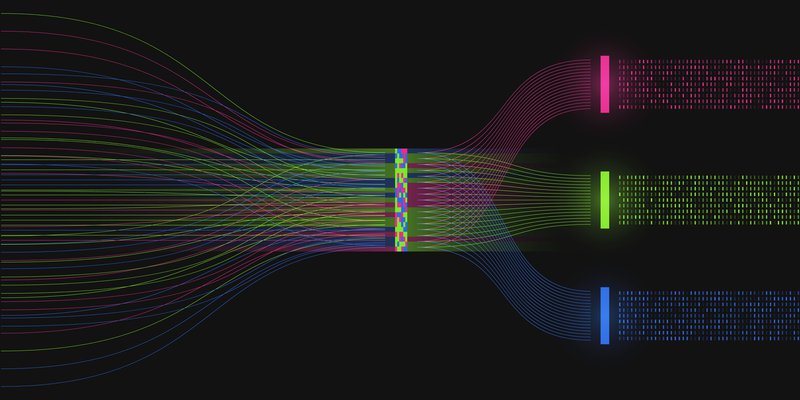Our VP of Marketing, Julie Ford, interviewed Jamie Alexander, our Head of Product, on how SkyVision...
Journey of Images: The Process of Analyzing Aerial Data
Aerial data starts with thousands of raw images. The journey of images then requires evaluation to derive actionable insights.
Using uncrewed aerial vehicles to capture aerial images can be a game changer for many industries.
For example, an Oil & Gas company can track the condition of its pipelines far more effectively from the air than from the ground. This bird’s-eye view offers a whole new perspective—one that isn’t otherwise visible. Along with this comes loads of data, some of which have never been captured before. However, the importance of these images hides within a massive volume of raw data. This is just the first step in a journey of images. Proper data processing can extract actionable information—and improve the way your organization does business.
The quality of data processing affects how useful the aerial imagery is. Better tools can assess your infrastructure and resources in ways that show how to improve operations.
Here, SkyX has developed innovative technology that maximizes the value of aerial data, using artificial intelligence (AI) to turn raw data into insights for extractive industries.

The Journey of Images Starts With Thousands of Aerial Photos
When a company wants to make use of aerial imagery, the process starts with an extensive series of photos to produce a journey of images. Images are captured by uncrewed aerial vehicles (UAV) These UAVs offer a cost-effective means to take thousands of photos from right above the assets.
Nonetheless, storing these UAV images does not in itself provide any meaningful information or actionable insights. It’s like having a pile of timber instead of a house. You can’t live inside a stack of two-by-fours.
To get what you need requires taking those multiple aerial photos and processing them into industry-relevant findings. For Oil & Gas companies, it’s not just about collecting photos of their assets. Crucially, the data extracted from these images gives them a deeper understanding of their resources—and how this impacts their business.
There are various techniques for processing aerial data, such as photogrammetry and photo interpretation. Using the appropriate methods helps you transform basic imagery into a visual source of truth.

Transforming Images to Actionable Aerial Data
New techniques in data science facilitate the journey of images, converting raw aerial photography into actionable information. Notably, it’s the processing of these images that are seen as the biggest challenge—not the capturing of the photos.
An important element in aerial data processing is to incorporate the location of photographed objects. Just seeing the image is not enough, you need GPS and other data to pinpoint the location. It’s also critical to monitor changes over time, which includes analyzing multiple photos, from the same angle, to compile usable knowledge.
There’s nothing straightforward about generating consistent aerial data insights showing precise changes over time. The process requires intelligence. For instance, either having a human expert work through the data (which is cost-prohibitive) or using AI.
Here, SkyX has developed AI specifically for the purpose of analyzing aerial data.
The SkyX UAVs fly over hundreds or thousands of kilometers, capturing precise, overlapping aerial images. Georeferencing each photo ensures that the correct location data can be found. Then, AI is able to visually assesses the images to find where assets like oil and gas pipelines are situated. Moreover, the same data can feed into your GIS tools, further empowering research.
With AI-processed maps, it’s much easier to monitor projects and identify problems. You’re also able to zoom in on a potential problem area from an aerial perspective. This way, you can gather more information on the issue before rolling out any trucks.
Due to the intelligent analysis of aerial data, you will automatically receive warnings based on trends. It’s like having a team constantly watching your entire asset base to determine when maintenance is necessary. Processed aerial data lets you accomplish weeks of work in mere hours.
The Importance of Processing Aerial Data
Aerial data processed by SkyX has numerous applications, such as monitoring pipeline corrosion and right-of-way status. Further, it’s possible to detect any third-party disruptions, like unauthorized digging, and inspect potential pipeline leaks.
For example, aerial image process can reveal the telltale signs of aging pipes as well as their effect on the surroundings. While it takes too long—and costs too much—to send out personnel for each suspected case, it’s fast and affordable to isolate leaks from the air.
Let’s say you receive an alert from one of your pipeline systems about a possible leak. In under half an hour, you can capture new aerial photography, accompanied by automatic image processing. The technology identifies liquid or gas leaks as well as environmental damage.
In addition to being able to instantly see any degradation of the pipelines—with confirmation or denial of the leak—you’ll have access to the exact time and location, enabling a rapid response. The data then goes into your GIS to enable further analysis.
Automated leak evaluation from aerial imagery is highly accurate and provides you with visual assurance. It’s also cleaner and safer than having to drive out there in person for an inspection.
The focus of Oil & Gas companies is their own business—not the analyzing of aerial data. That’s why it makes sense to partner with a company like SkyX, which specializes in processing aerial data. This frees you up from otherwise time-consuming tasks, giving you actionable insights while you continue to work on what you do best.
Key Steps in the SkyX Image Processing Pipeline
The SkyX image processing pipeline refines thousands of images into a manageable output that gives you the information you need to act. The entire solution is built around delivering long-range infrastructure asset monitoring—unlike any other system on the market.
SkyX’s journey of images involves several steps. First, UAVs fly over the pipelines taking carefully structured photos. These aerial images are then uploaded to the cloud. Once there, custom software validates the images with multiple tests that establish the accuracy and location of each shot.
With the image data validated, it’s time to assemble all the different shots into a complete scene covering the drone’s flight path. Thereafter, the software analyzes the flight for points of interest. You can see these locations from the sky and decide how to respond to each situation optimally.
The whole process is designed to transform raw aerial images into actionable insights. Essentially, it develops a model of your assets in their actual locations and monitors the development of these assets over time. The results keep you informed as assets evolve, unlike haphazard alternatives that can’t track an area correctly.
SkyX’s proven technology captures even the largest areas with high-definition imagery. Hyperscale IT infrastructure effortlessly glides through the data. In fact, the complete procedure can be done in just a day, unlike older approaches that took an order of magnitude longer.
Go From Reactive to Proactive with Predictive Analytics
Thanks to the faster information flow of SkyX data, you can move from reaction mode to predictive analytics. Processed aerial imagery tells you in advance that a pipeline is deteriorating or that illegal work is underway nearby. This lets you act early enough to prevent an expensive incident.
To make predictive analytics work for Oil & Gas assets, SkyX starts with baseline aerial images. Then, additional photos undergo analysis to identify changes. The rate at which pipelines and their surroundings change entails estimates of future developments. AI makes relevant inferences. No human could work at this speed—or as cost-effectively.
The stages in SkyX’s processing unlock visibility into trends affecting your assets. Further, intelligent data-driven modeling yields statistical understanding that directs maintenance efforts to where they do the best.
Even the best raw images may not have much value for Oil & Gas operations on their own. However, once processed through machine learning algorithms they allow you to predict the future. Forecasting is the first step toward fixing things before they break. Take the first step in your journey of images, and you’ll be amazed at the long-term cost savings.
Using aerial data to manage assets is a powerful way to improve operations. However, it involves more than collecting raw data. Smart image processing is the key to unlocking the power of aerial data—as done exclusively by SkyX’s AI platform.
SkyX handles all the drone certification and operations, as well as the image processing. You’re able to examine the actionable output at any time. Moreover, it’s easy to scale up or down to suit your ongoing demands.
Extracting valuable insights from aerial imagery also lets you take action when it’s most affordable. Maintenance and prevention become proactive. Save money on repairs by identifying problems early—don’t wait until it’s too late.
SkyX provides a comprehensive service that captures and processes aerial data. Because the whole procedure is managed, it frees your resources and gives you time to handle your core business.
Book a demo to see what your journey of images could look like.

.png?width=50&name=SkyX%20Logo%20-%20Square%201%20(1).png)

